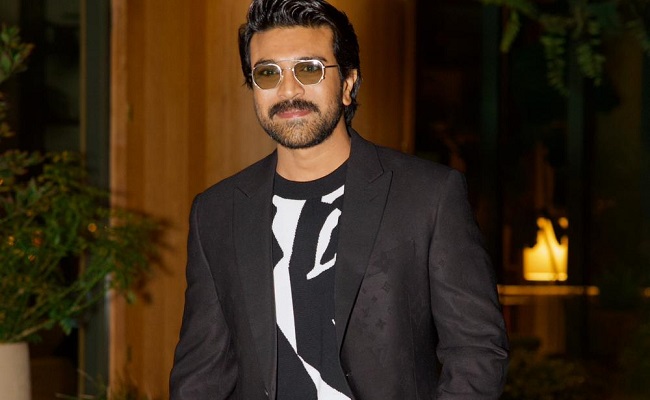Russia-India Trade Prospects in 2023 & The Emergence Of The Ruble and Rupee In Asian Trade Flows
Written by on January 9, 2023
At the end of 2022, Russia and India agreed to switch to trade settlements in their national currencies. Over the past year, trade turnover between Moscow and New Delhi has grown significantly and both intend to increase these volumes during 2023. Meanwhile, Russian exports to India significantly exceed Indian imports from this country, when the Indian Rupee has significantly dipped against the US Dollar and the Russian Ruble. We look at how such variations can be overcome, setting in motion mechanisms for additional mutual settlement schemes with countries whose currencies may not be as strong as the Ruble, and look at the 2023 prospects for Russia-India bilateral trade.
In mid-November last year, India announced plans to double the volume of trade with Russia, noting that the transition to settlements in national currencies would only be an additional incentive for this. In late autumn, the Indian authorities allowed the use of Rupees in international trade settlements.
Special ‘Vostro’ accounts are already being opened in Russian banks, in addition, financial institutions from Russia have been allowed to open accounts in Indian banks in Rupees. For Moscow, this is important, given that Russian assets in Dollars and Euros around the world have been seized, and any currency of “unfriendly countries” in Russian accounts can be blocked. However, there are risks: over the past few years, the Rupee has lost over 25% against the Russian Ruble and 10% against the US Dollar.
According to Reuters, from January to August 2022, the trade turnover between Russia and India increased by 130%, reaching US$17 billion. In the same period last year, this figure was US$3.2 billion. The reason for such a sharp increase was the supply of Russian oil to India at deep discounts. New Delhi quadrupled its purchases of oil from Russia. Moscow ousted Riyadh and Baghdad, becoming the largest exporter of this energy resource to India (22% of total imports, or 4.03 million tons).
Overall, Russia has risen from 25th to 7th place in the list of the largest trading partners for India. At the same time, the export of Indian goods to Russia decreased from US$1.31 billion to US$992.7 million. In addition, Russia asked India for help with the supply of several hundred goods that the country cannot buy because of the sanctions imposed against it. The Indian Foreign Minister, Subrahmanyam Jaishankar said that New Delhi is ready to start deliveries of spare parts needed for Russian trains, cars and planes.
At a recent meeting with his Russian counterpart Sergei Lavrov, Jaishankar said that the countries plan to soon bring trade to US$30 billion, a goal set by Indian Prime Minister Narendra Modi and Russian President Vladimir Putin.
The parties also discussed cooperation in the field of nuclear energy and space, as well as the possibilities of military-technical cooperation. In early November, the head of the Kalashnikov concern, Alan Lushnikov, said that the plant for the production of AK-203 assault rifles in India had already begun to produce products.
India meanwhile has resisted pressure from the West and has not joined anti-Russian sanctions. Moscow, in turn, is prepared to establish improved trade and energy deals with states that did not support the introduction of restrictive measures against it. For Russia, this is a step to overcome the sanctions pressure on the economy.
Balancing Trade To Help With Ruble-Rupee Disparity
In September 2022, India overtook the UK in terms of GDP and became the fifth economy in the world as from Q1 that year. The country currently provides 3.5% of global GDP and contributes to global economic growth close to that of the US and China. New Delhi has overtaken Washington and Beijing in the speed of economic recovery, but at the same time concedes to them due to the sheer scale of their manufacturing output. However, India now noticeably outperforms all other countries in the world’s top 10 largest economies, including Brazil, Germany and Japan.
The volumes of the products that India supplies to Russia can be expected to increase. These include chemicals (46% in the import structure), machinery and vehicles (30%), food and agricultural raw materials (16%), metals (8%), textiles and footwear (7%), precious metals and stones (2 %). It is likely that sooner or later it will be possible to balance the trade turnover, as India is acquiring increasing Russian raw materials, buying them at discounted prices. Obtaining a better balance in trade turnover will make the ability to trade in Rubles and Rupees increasingly attractive as a means for Russia to reduce its current overbalance of acquiring Rupees when set against the Ruble volumes.
India is therefore highly interesting for the prospects of Russian trade as part of the general “Pivot to Asia” as a result of Western sanctions. The United States, Brussels and Ukraine might not like it, but the reality is that India requires competitive Russian raw materials and energy to fuel its own domestic economy.
Russia-India Bilateral Trade Prospects 2023
In 2021, trade between the countries amounted to US$13.5 billion, with Russian exports making up US$9.1 billion, and imports – US$4.4 billion. Sales of Russian goods more than doubled the reverse flow. In 2022–2023, an even greater bias towards the prevalence of Russian exports of goods over imports from India is likely. This is primarily due to the transfer of part of Russian energy exports to Asia.
Russia is also increasing sales to India of precious metals and products made from them, non-ferrous metallurgy products, pharmaceutical, chemical, rubber industry, electric machines, vehicles, aluminum, and other non-ferrous metals. Pharmaceutical, chemical, and mechanical engineering products are also exported from India to Russia. In addition, there are opportunities to increase the supply of food, fabrics, clothing and footwear to replace foreign suppliers who have left the Russian market.
In addition, India can be used as an important participant in the parallel import of Western goods to Russia. In particular, New Delhi announced that it was ready to supply Russia with spare parts for aviation, automotive, and railway equipment. Thus, for Rupees, Moscow can buy not only Indian, but also foreign products. This reduces Russia’s surplus in trade with India and allows additional use of Rupees. This too will slowly diminish the use of the US dollar in international trade. With the Rupee poised to become more stable – ironically, on the back of India-Russia trade flows, other regional countries with significant trade partnerships with India will also begin to trade in Rupees, further strengthening the currency. These include the UAE, Saudi Arabia, Iraq, Singapore, Hong Kong, and Indonesia – all in India’s top ten trade partners. Smaller regional economies such as Sri Lanka have exclusively begun to use the Indian Rupee in trade.
Ruble-Rupee And Yuan To Spearhead Currency Usage In Asian Trade
This means that part of the Russian-India trade growth and use of Ruble-Rupee trade will contain spill-over effects. While in the short term, Russia may initially acquire more Rupees than it would ideally like, other countries have started to discuss Rupee trade. These include Tajikistan, Cuba, Luxembourg, Mauritius and Sudan keen on rupee trade. While these may appear on the surface to be smaller players, this is just the beginning of a new trend. Also, Tajikistan is a member of the Commonwealth of Independent States (CIS) and trades directly with other CIS members, Luxembourg is a financial offshore power-house in Europe, while Mauritius is developing as a financial services gateway to the pan-African Continental Free Trade Agreement. From these small acorns, more significant Rupee trade may then develop.
If so, then Russian holdings of Indian Rupees held on account as a result of the current trade balance can be expected to appreciate in value, as the Rupee is used more on regional and international trade – benefiting both countries, and in part, allowing Moscow to develop as an Asia international finance centre. The Indian Rupee, along with other Asian currencies such as the Chinese Yuan, and UAE Dirham are already traded on the Moscow Stock Exchange (MOEX). The impact is already being felt: the Chinese Yuan achieved a bigger trading turnover than the Euro on the MOEX by the end of 2022.
The upshot is that the Russian Ruble will take its place alongside the Chinese Yuan and Indian Rupee as the ‘Big Three’ currencies amongst an increasingly significant basket of other Asian currencies, at the expense of the US Dollar and Euro.
This article has been adapted and amended with additional Asian commentary added to an article titled “East, and Only: Russia and India Decided To Increase Cooperation” by Ksenia Loginova that appeared in Russian on the Izvestia newspaper on January 7, 2023.
Related Reading
About Us
Russia Briefing is written and produced by Dezan Shira & Associates. During these uncertain times and sanctions imposition, our firm assists Russian companies relocate to Asia, and provides financial and sanctions compliance services to foreign companies operating in Russia. We also provide market research and advisory services to foreign exporters interested in Russia as the economy looks to replace Western sourced products. Please contact us at russia@dezshira.com or visit us at www.dezshira.com.
watch avatar the way of water full movie
watch avatar the way of water full movie
watch avatar the way of water full movie





